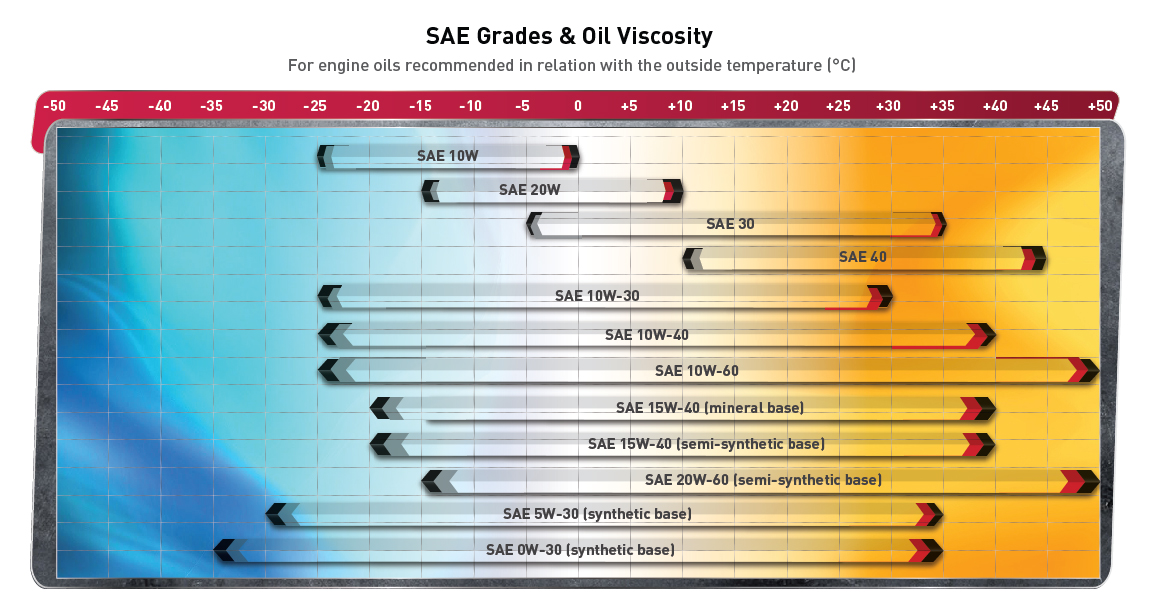

ENGINE OIL VISCOSITY MANUAL
Usually, the recommended oil grade is mentioned in your owner's manual or on the oil filter cap. The opposite happens when the engine is hot because the oil becomes thin with rising temperature, and a low-viscosity oil may fail to adequately separate metal components, inviting wear and tear.Īll vehicle manufacturers today recommend the use of multi-grade engine oil. Furthermore, if the oil flows slowly, engine components are vulnerable to wear until the oil warms up and flows throughout the engine for lubrication.

This makes it tough for you to crank the engine during cold starts.

When the temperature drops, the engine oil thickens, flows slowly, and requires energy to circulate. To put it simply, the engine oil grades are viscosity indicators that dictate how an engine oil will perform at different temperatures.Įngine oils with higher viscosity can lead to poor cold starts, whereas engine oils with lower viscosity can increase metal-to-metal contact, friction, and wear. The lower the W-rating (e.g., 0W or 5W), the faster oil flows when the engine is cold and the easier it is to turn the engine while starting. The W-rating, also known as the winter rating, of oil is determined by its cold-cranking performance. It shows the minimum and maximum allowable temperatures for engine oil to be rated for a particular viscosity grade. The viscosity of engine oil can be understood by the SEJ-300 chart. The higher number (40) indicates a high viscosity of the engine oil and resistance to thinning at high temperatures. Similarly, a 5W30 grade engine oil thins out quickly and loses its viscosity at high temperatures compared to an engine oil with a 5W40 grade. However, their viscosity at high temperatures is the same, as indicated by the number 30, which is the same for both engine oils. Engine oil with a grade 5W30 is less viscous in cold weather compared to a 10W30 grade oil. The number after the letter W indicates the viscosity of the oil at 100 degrees Celsius and its resistance to thinning at high temperatures. If this number is lower, the oil is less viscous at lower temperatures and moves around the engine easily, especially during cold starts. The letter "W" stands for Winter, and the number before the letter W shows the oil's flow (viscosity) at zero degrees Fahrenheit (-18 degrees Celsius). These are viscosity grades often referred to as oil weights. It includes engine oil grades like 5W30, 10W40, 15W30, etc. The Society of Automobile Engineers (SAE) has created a numeric system called J-300 Engine Oil Viscosity Classification (EOVC) that classifies engine oils according to their viscosity characteristics. This means when the oil is used at different temperatures, the change in its viscosity must be as minimal as possible. However, it must also not be too viscous to resist flow at cold temperatures when the engine is started. Therefore, the engine oil must be viscous enough to protect the engine at operating temperatures and act as a protective film between two moving parts to prevent metal-to-metal contact. The primary task of engine oil is to keep the engine components lubricated and reduce friction between moving parts.


 0 kommentar(er)
0 kommentar(er)
